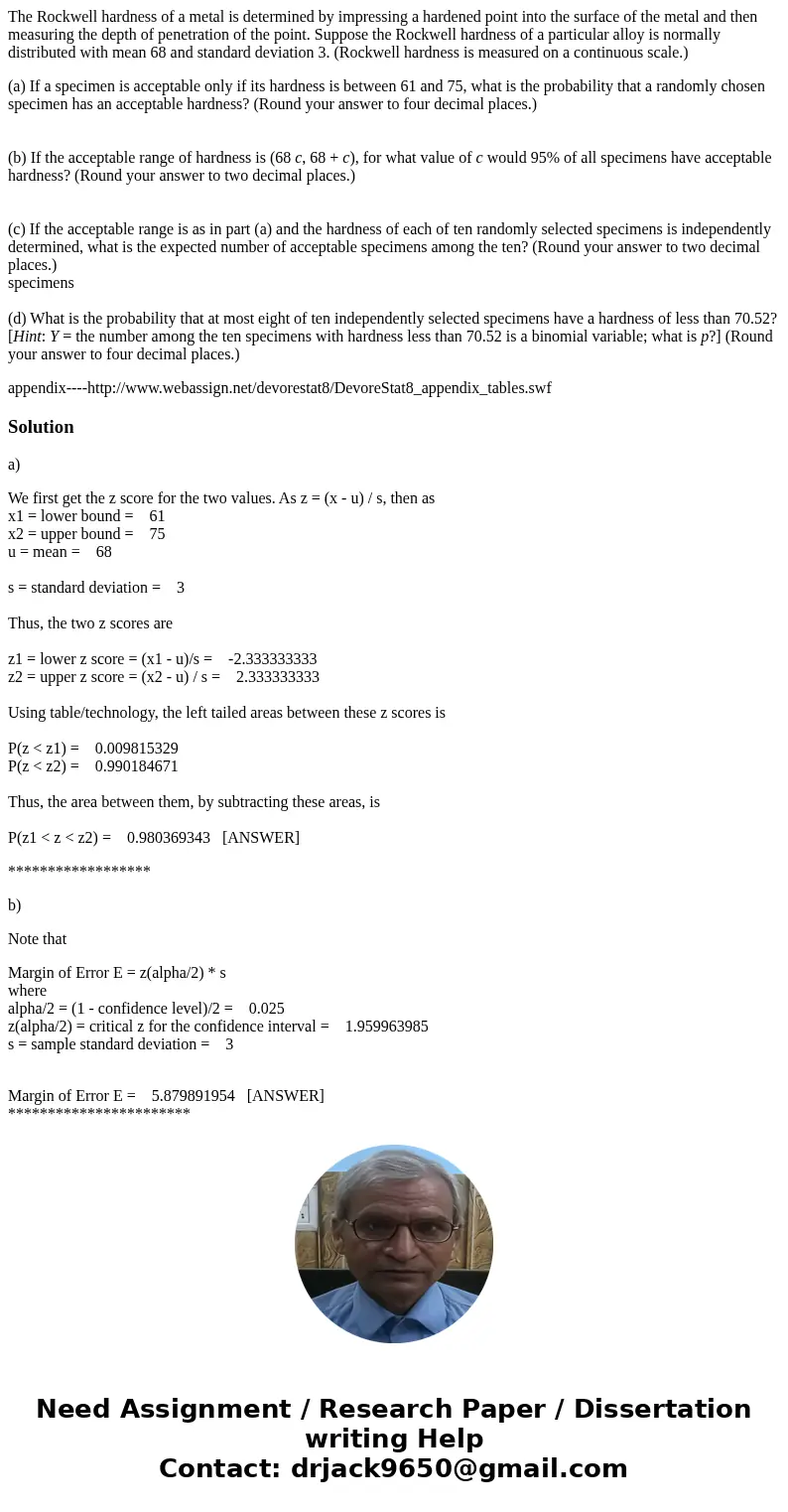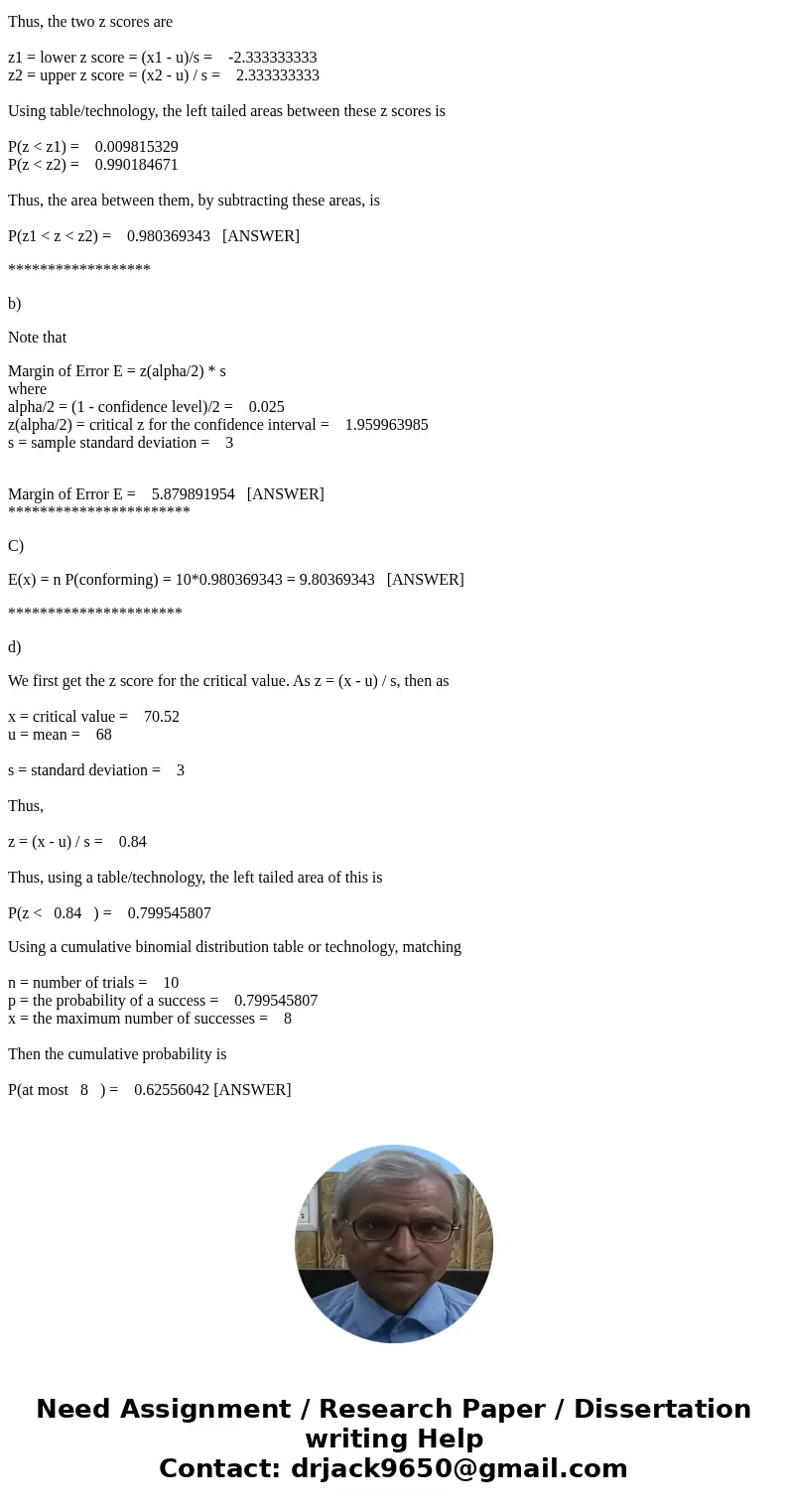The Rockwell hardness of a metal is determined by impressing
The Rockwell hardness of a metal is determined by impressing a hardened point into the surface of the metal and then measuring the depth of penetration of the point. Suppose the Rockwell hardness of a particular alloy is normally distributed with mean 68 and standard deviation 3. (Rockwell hardness is measured on a continuous scale.)
(a) If a specimen is acceptable only if its hardness is between 61 and 75, what is the probability that a randomly chosen specimen has an acceptable hardness? (Round your answer to four decimal places.)
(b) If the acceptable range of hardness is (68 c, 68 + c), for what value of c would 95% of all specimens have acceptable hardness? (Round your answer to two decimal places.)
(c) If the acceptable range is as in part (a) and the hardness of each of ten randomly selected specimens is independently determined, what is the expected number of acceptable specimens among the ten? (Round your answer to two decimal places.)
specimens
(d) What is the probability that at most eight of ten independently selected specimens have a hardness of less than 70.52? [Hint: Y = the number among the ten specimens with hardness less than 70.52 is a binomial variable; what is p?] (Round your answer to four decimal places.)
appendix----http://www.webassign.net/devorestat8/DevoreStat8_appendix_tables.swf
Solution
a)
We first get the z score for the two values. As z = (x - u) / s, then as
x1 = lower bound = 61
x2 = upper bound = 75
u = mean = 68
s = standard deviation = 3
Thus, the two z scores are
z1 = lower z score = (x1 - u)/s = -2.333333333
z2 = upper z score = (x2 - u) / s = 2.333333333
Using table/technology, the left tailed areas between these z scores is
P(z < z1) = 0.009815329
P(z < z2) = 0.990184671
Thus, the area between them, by subtracting these areas, is
P(z1 < z < z2) = 0.980369343 [ANSWER]
******************
b)
Note that
Margin of Error E = z(alpha/2) * s
where
alpha/2 = (1 - confidence level)/2 = 0.025
z(alpha/2) = critical z for the confidence interval = 1.959963985
s = sample standard deviation = 3
Margin of Error E = 5.879891954 [ANSWER]
***********************
C)
E(x) = n P(conforming) = 10*0.980369343 = 9.80369343 [ANSWER]
**********************
d)
We first get the z score for the critical value. As z = (x - u) / s, then as
x = critical value = 70.52
u = mean = 68
s = standard deviation = 3
Thus,
z = (x - u) / s = 0.84
Thus, using a table/technology, the left tailed area of this is
P(z < 0.84 ) = 0.799545807
Using a cumulative binomial distribution table or technology, matching
n = number of trials = 10
p = the probability of a success = 0.799545807
x = the maximum number of successes = 8
Then the cumulative probability is
P(at most 8 ) = 0.62556042 [ANSWER]


 Homework Sourse
Homework Sourse